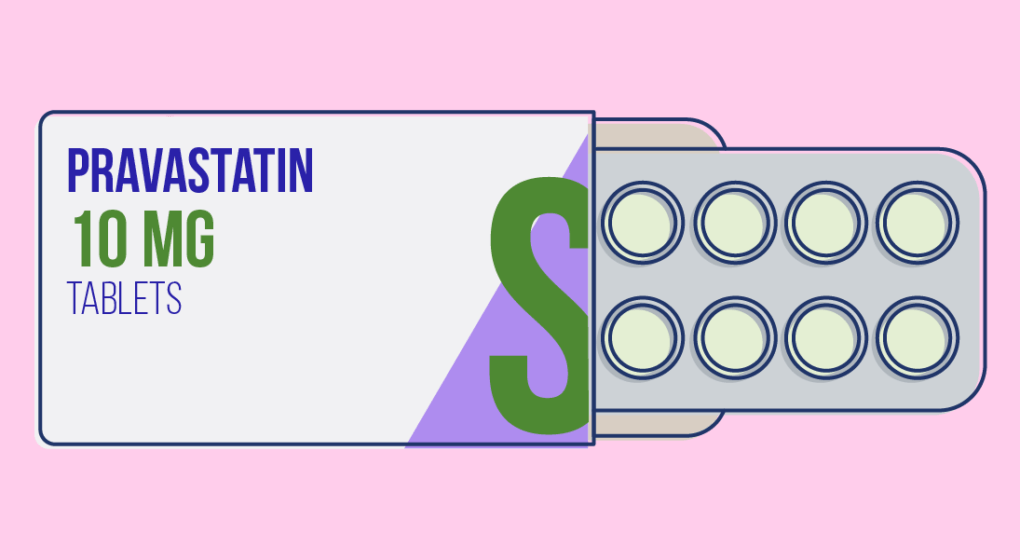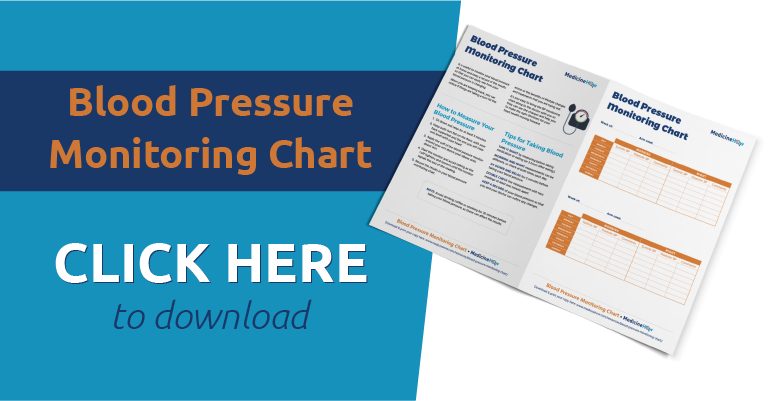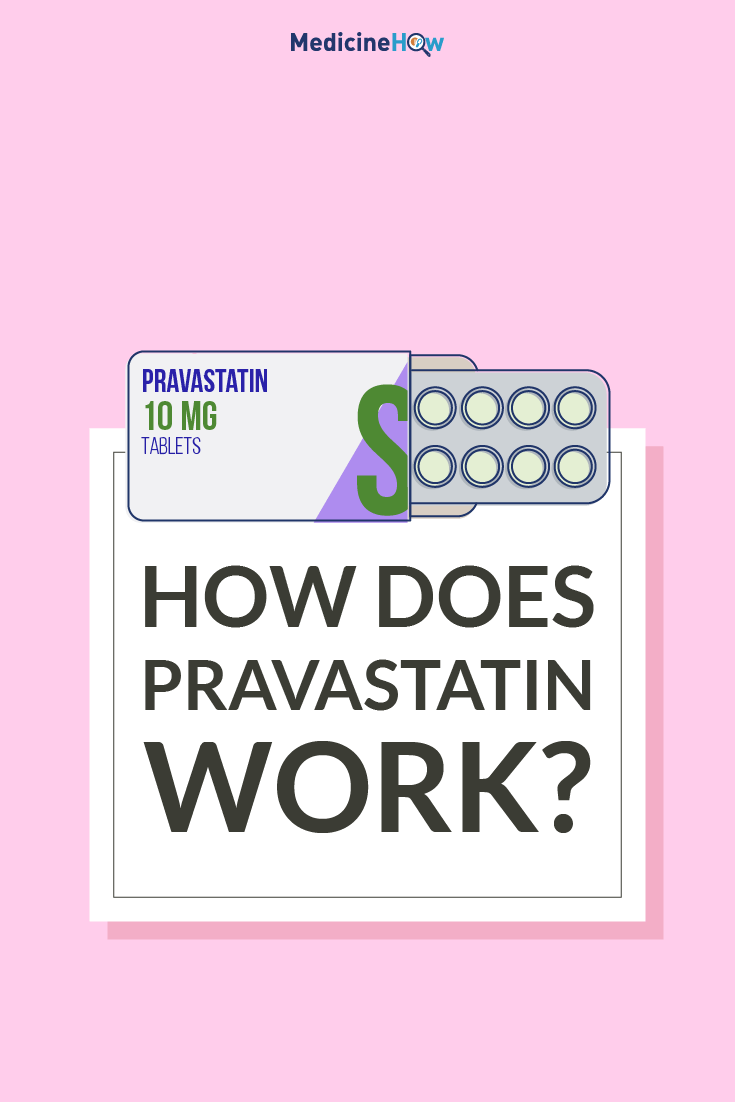
Pravastatin is a type of drug called a statin, which is a class of drugs that work in a similar way to control the level of cholesterol in your blood. It does this by inhibiting an enzyme in the body that is needed to produce cholesterol, meaning that the amount of cholesterol inside your body will be reduced.
Brand Names and Doses
![]() Pravastatin is the generic name of the drug, which is the active component that works an effect on your body. It also has several brand names that are given to it by the manufacturing company of the drug such as:
Pravastatin is the generic name of the drug, which is the active component that works an effect on your body. It also has several brand names that are given to it by the manufacturing company of the drug such as:
- Lipostat
- Pravachol
- Cholstat
- Cholvastin
There are also different doses available include 10 mg, 20 mg, 40 mg and 80 mg.
Most people who begin with a low dose such as 10 mg or 20 mg once a day. The dose can then gradually be increased as needed until the cholesterol in the blood reaches a safe level. Your doctor will usually schedule a follow-up appointment in about a month to monitor the effect of the drug. This allows your body time to adjust to the drug and reduces the risk that you will experience side effects.
It is best to take pravastatin at nighttime because it is more effective when taken just before bed.

What type of drug is it?
![]() Pravastatin is a type of drug called a statin. There are other several drugs that are in this class including:
Pravastatin is a type of drug called a statin. There are other several drugs that are in this class including:
Pravastatin has a slightly smaller effect on cholesterol in the blood when compared to the other drugs in this class. However, it can be a good choice because it is less likely to interact with other medications that you may be taking.
What is pravastatin used for?
![]() Pravastatin is used to lower the LDL cholesterol, reduce triglycerides and increase HDL cholesterol concentration in the blood, all of which can be helpful to prevent cardiovascular events from occurring.
Pravastatin is used to lower the LDL cholesterol, reduce triglycerides and increase HDL cholesterol concentration in the blood, all of which can be helpful to prevent cardiovascular events from occurring.
If you have a high risk of cardiovascular disease, pravastatin can reduce your risk of suffering from a myocardial infarction, stroke, revascularization procedures, and death.
Your doctor may recommend pravastatin if you have:
- High levels of cholesterol in your blood (hypercholesteremia)
- Hypertension and other risk factors for heart disease
- High levels of triglycerides and cholesterol in your blood (mixed hyperlipidemia)
- Recently had a heart attack (myocardial infarction)
- Unstable angina
- Heterozygous familial hypercholesterolemia.
Pravastatin should only be used in combination with diet and lifestyle alterations and not as a substitute for healthy living choices.
How does pravastatin work?
![]() Pravastatin reduces the level of LDL cholesterol in your blood by changing the way that cholesterol is produced in your body.
Pravastatin reduces the level of LDL cholesterol in your blood by changing the way that cholesterol is produced in your body.
Usually, an enzyme called 3-hydroxy-3-methylglutaryl coenzyme A (HMG-CoA) reductase is needed to synthesize cholesterol in the body. When you take pravastatin, it blocks this enzyme and reduces the rate that cholesterol can be produced, and the concentration of cholesterol in the blood decreases.
Pravastatin can also increase the uptake of cholesterol from the blood in the liver. This means that more cholesterol is taken out of the blood and broken down in the liver, reducing the LDL cholesterol even further. It can also increase the concentration of triglycerides and increase HDL cholesterol. HDL cholesterol is sometimes known as “good cholesterol” because it is believed to help prevent cardiovascular events.
Side Effects
![]() Most patients can take pravastatin without any noticeable side effects, although you may experience:
Most patients can take pravastatin without any noticeable side effects, although you may experience:
- Muscle pain (myopathy)
- Nausea, diarrhea or vomiting
- Headache
- Insomnia
- Dizziness
- Elevated levels of aminotransferase in the body (dose related)
In rare cases, severe muscle pain called myopathy or rhabdomyolysis may present. This usually happens when the dose is too high, such as if there is an interaction with another drug or another related health condition. The effects will usually improve if your dose is reduced.
It is important that you are aware of the possible side effects of pravastatin so that you can recognize the signs and talk to your doctor about decreasing the dose if needed.
Precautions
![]() If you have severe trauma, infection or metabolic disease, there is an increased risk of side effects and complications such as myopathy, rhabdomyolysis, and renal failure. Your doctor may advise you to temporarily stop taking pravastatin until you recover to prevent this.
If you have severe trauma, infection or metabolic disease, there is an increased risk of side effects and complications such as myopathy, rhabdomyolysis, and renal failure. Your doctor may advise you to temporarily stop taking pravastatin until you recover to prevent this.
These side effects are also more likely if you have poor renal function, which is often a natural part of aging. If your kidneys aren’t working 100% make sure that our doctor knows so that they can prescribe the right dose for you.

Drug Interactions
![]() Pravastatin can interact with some other drugs that you may take such as darunavir or saquinavir.
Pravastatin can interact with some other drugs that you may take such as darunavir or saquinavir.
In most cases, you can take both drugs together but the dose may need to be changed.
If you are taking either of these drugs with pravastatin, it is important that your doctor knows so that the dose can be adjusted if needed.
Pregnancy and Breastfeeding
![]() Pravastatin should not be used during pregnancy because it can increase the risk of fetal malformation during the first trimester of pregnancy. If you are a woman of childbearing age, it is important that you use adequate contraception to avoid an unexpected pregnancy while taking pravastatin and talk to your doctor about your medication before trying to conceive.
Pravastatin should not be used during pregnancy because it can increase the risk of fetal malformation during the first trimester of pregnancy. If you are a woman of childbearing age, it is important that you use adequate contraception to avoid an unexpected pregnancy while taking pravastatin and talk to your doctor about your medication before trying to conceive.
Pravastatin is also not recommended for women who are breastfeeding due to the effect it could have on the baby if excreted in breast milk.
Pin it!


